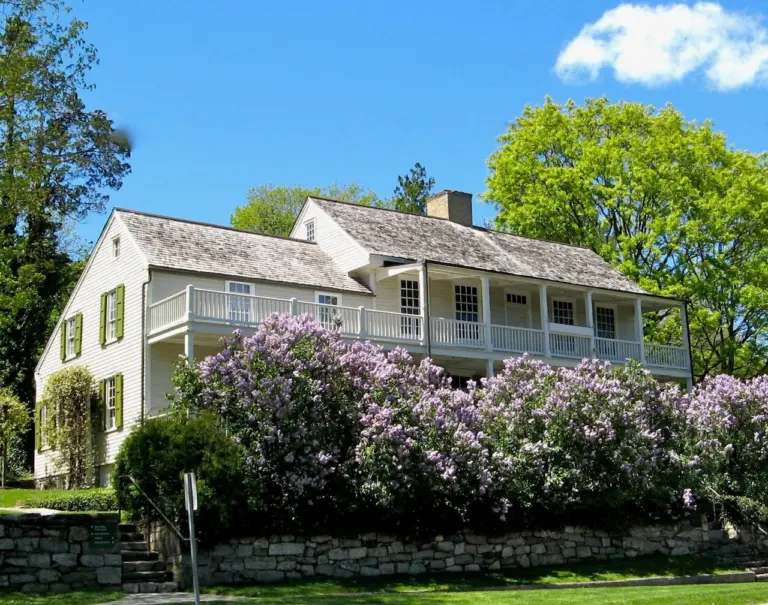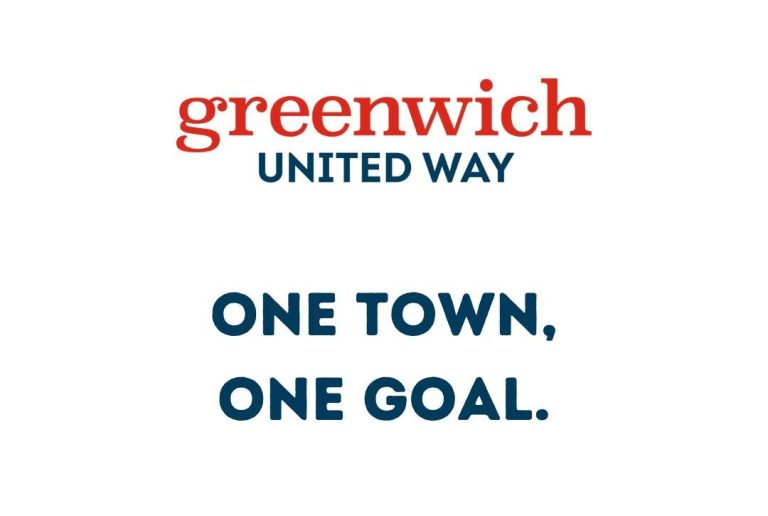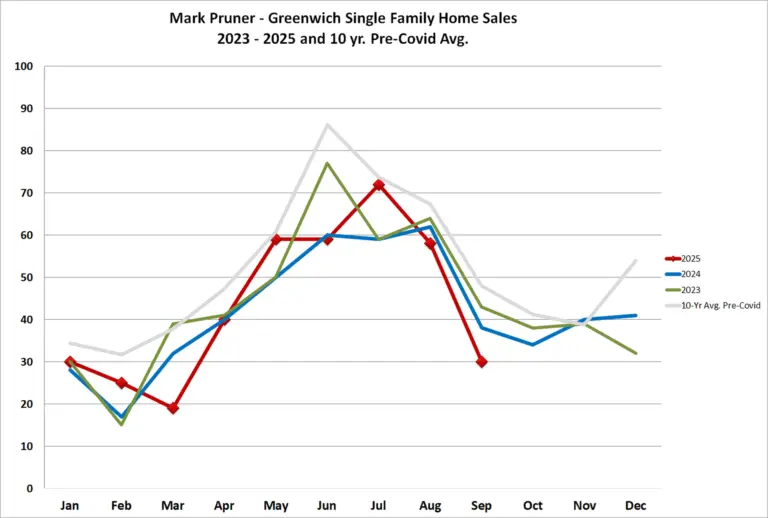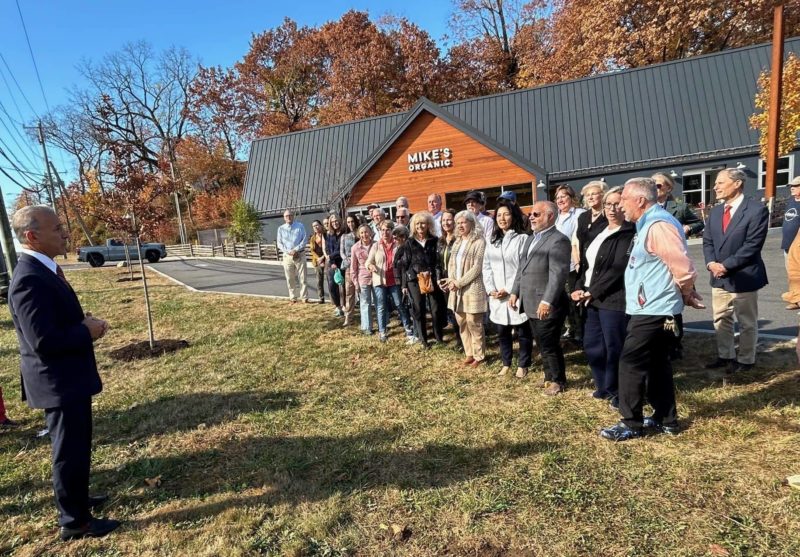
By Anne W. Semmes
The beginning of a significant greening of the Town of Greenwich was celebrated last Friday in Cos Cob, along the Post Road before the now closed Mike’s Organic store, with the planting of half a dozen 8-to-10-foot-tall trees. Those trees are the first of some 100 to be planted this fall along the Post Road, with an additional 270 planned to be planted in the spring on the Post Road from the New York border to the Stamford border.
To accomplish this goal of creating a tree-lined boulevard as a green gateway to New England has taken more than a village – a town and a state, as the Post Road as Route 1 is state-owned. And there gathered to celebrate were the officials who made it happen, along with the non-profit Greenwich Tree Conservancy (GTC) contributing the cost of the trees and their planting.
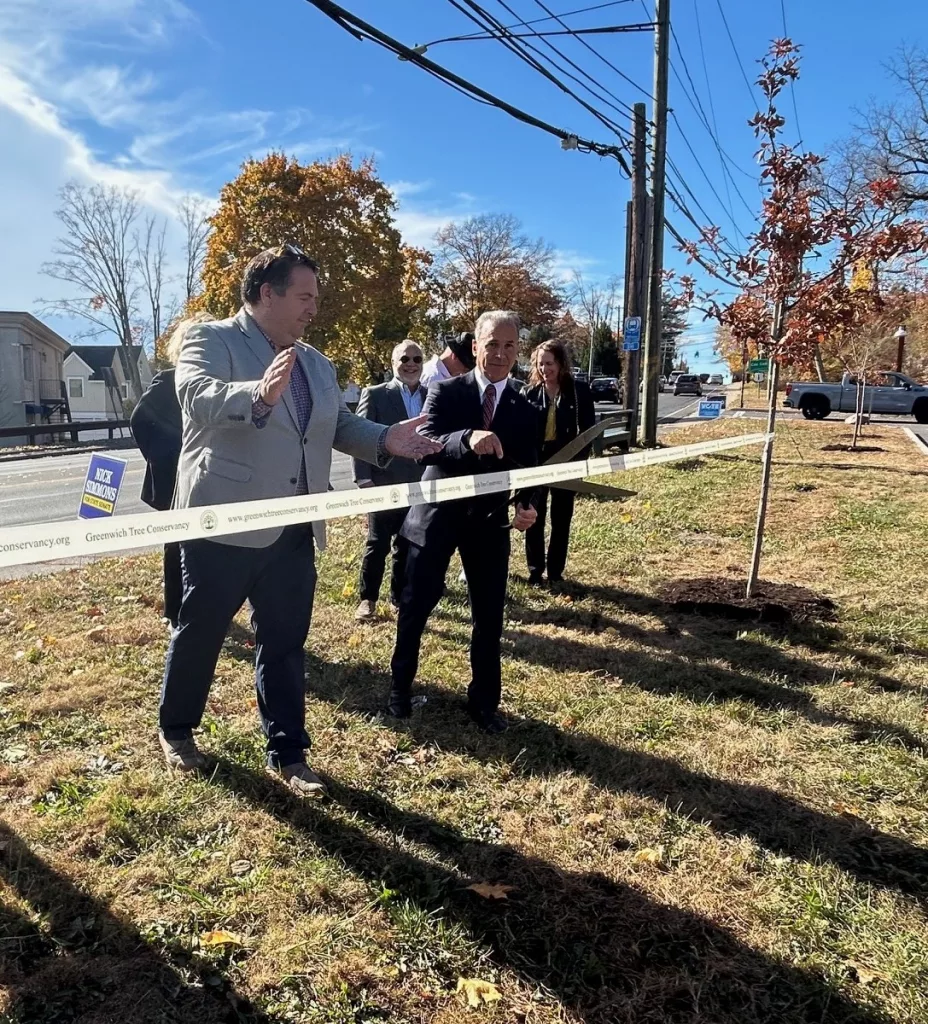
“This is something that we can all be proud of,” said arriving First Selectman Fred Camillo, “and we will be able to watch this grow in the coming years, but it all starts today.” He then thanked the GTC “and everyone that volunteers there, the Department of Public Works, Planning and Zoning – they worked so hard on this. And to all the people that have been supportive, too many people to mention. Thank you so much for what you’ve done and continue to do to making Greenwich the greenest town in Connecticut.”
Town Planner Patrick LaRow stepped up with, “The Post Road is our major east-west roadway. Like Fred said, it’s our gateway, it’s our introduction, and it’s also our major path into town. It connects all our cultural, economic, and institutional assets. We believe this is the first step in strengthening Greenwich’s distinct character.”
LaRow also thanked the GTC for “lending their time and expertise” as well as “providing the material and labor to install the trees, and Lorenti and Co. the installer who will be planting these trees.” He pointed out the work of the Town’s Greenscape Committee “who set this plan into motion,” a Committee that included GTC’s former executive director JoAnn Messina who was present but at a distance with Covid. She shared her remarks later.

“The concept of P&Z to create a tree lined boulevard on Route 1 from Port Chester to Stamford was one that all of us fortunate enough to be invited to the Greenscape Committee could envision,” said Messina. The Committee as chaired by Richard Hein and including John Conte, Tree Warden Dr. Greg Kramer, and Planning and Zoning staff “was incredible to work with,” she said. “Beginning during the pandemic, the biweekly meetings via zoom kept us all inspired. Once we walked the entire length, sited the trees and had them reviewed by the Department of Public Works, we thought we were done but then three years of obstacles from Connecticut Department of Transportation (DOT) began. As of today, we have 100 of the 370 sites approved by DOT but we will continue the process until we can achieve our original vision.”
Urling Searle, GTC board chair who was present had shared, “JoAnn was the driving force behind this successful partnership and everyone at GTC is very proud of her!” And “The Tree Conservancy is honored to gift these trees and their planting to the town for this important project and is most grateful to all of our supporters whose generosity makes this possible. “
A variety of canopy and ornamental trees will be planted, told Searle, “Taking into account location, soil conditions, any overhead wires or other variables,” with “an average cost of a tree planting to be $500 with fluctuation often due to tree species and availability. These plantings include trees from Sam Bridge Nursery.”
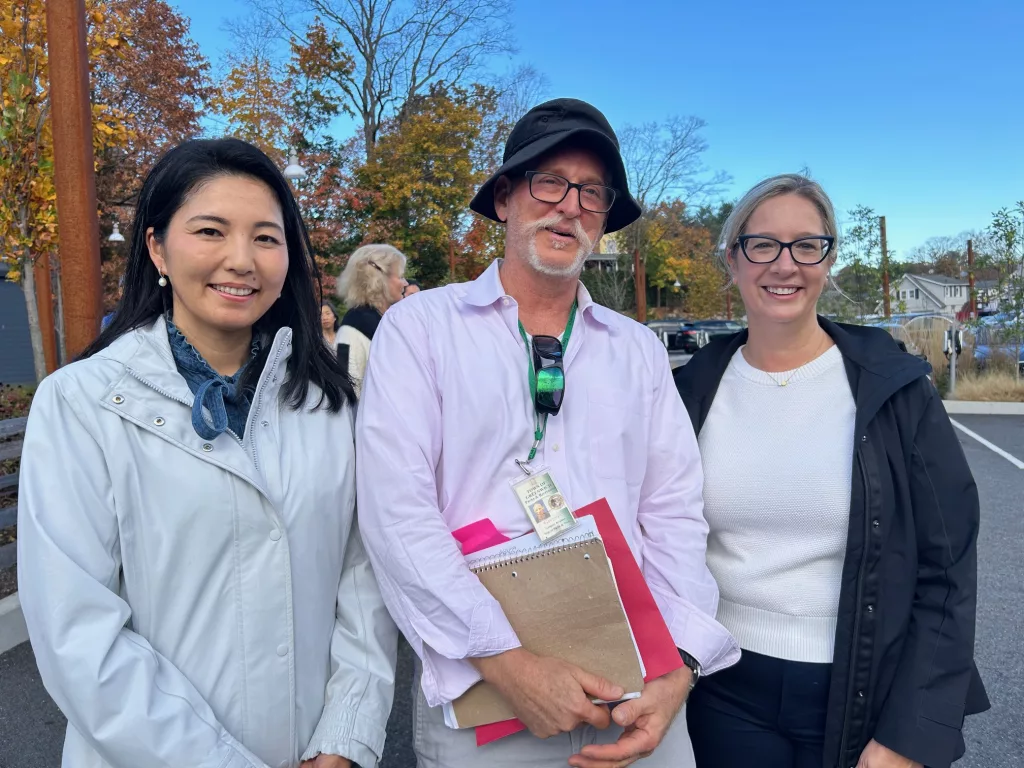
Tree Warden Kramer identified those inaugural half a dozen trees planted as “two different species of oak – willow oak, English oak, and flowering cherry trees, magnolias, and crepe myrtle.” And why were these trees chosen? “They were chosen for their durability, their contributions to wildlife, and also, there’s an aesthetic side one experiences as they drive through.”
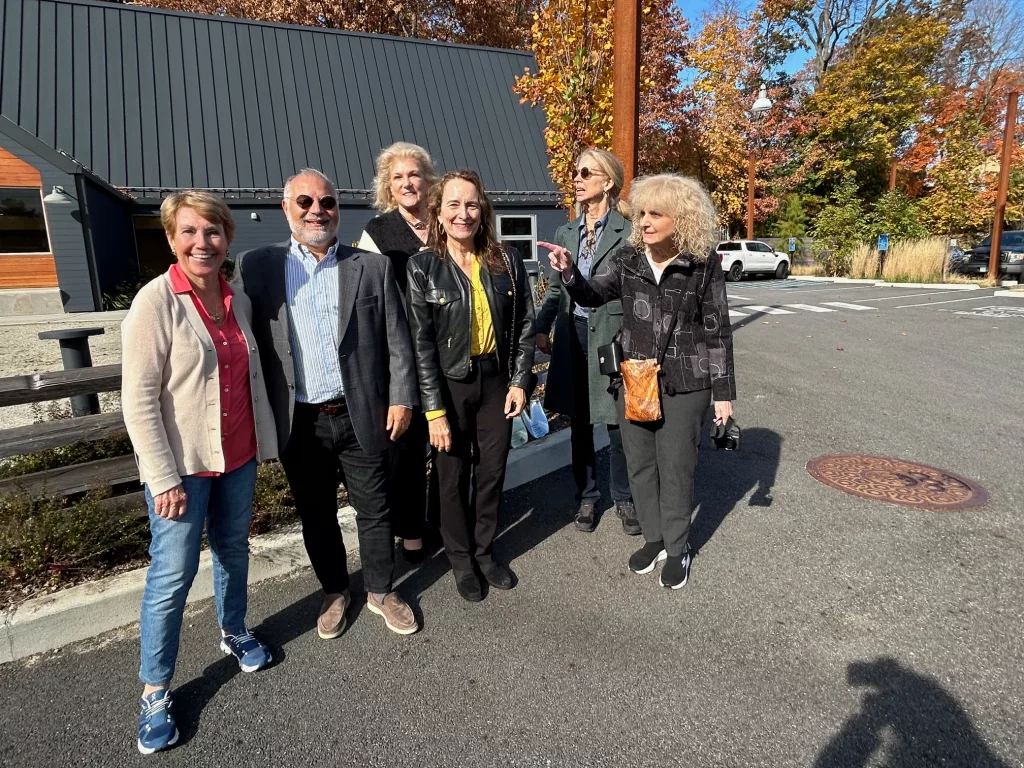
Questioned how those 370 trees will benefit our environment, Kramer responded, they will be “cleaning the air, reducing carbon dioxide, and over time they’ll produce acorns for wildlife for a lot of the migrating warblers that come up from the south…when the little leaves are coming out fresh and a lot of the caterpillar larvae will then feed on it and it feeds the birds, and fattens them up.”
And finally, there was that ceremonial First Selectman ribbon cutting with giant scissors, and notable participants posing around those inaugural trees with golden shovels, and a lot of proud smiles.

